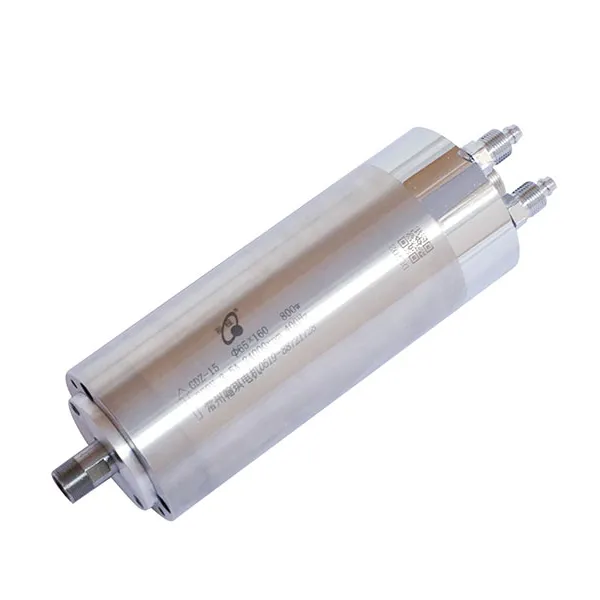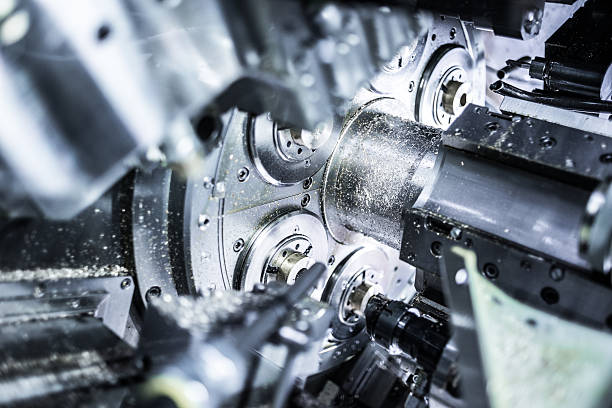The world of CNC machines is expansive, offering a vast array of opportunities for manufacturing and creating products with precision. But, what does CNC stand for, and why is it such a pivotal part of modern industry? In this comprehensive guide, we’ll dive into the core concepts of CNC, explore its importance in various sectors, and discuss how CNC machines contribute to efficiency and innovation.
What Does CNC Stand For?
CNC Explained: The Basics
CNC stands for Computer Numerical Control. This term refers to the use of computers to control machine tools such as lathes, mills, routers, and grinders. Instead of manually operating these tools, CNC machines use pre-programmed sequences of commands, allowing for highly accurate and repeatable production processes.
- Computer Control: The computer’s role in CNC is to translate a design, usually created in CAD (Computer-Aided Design) software, into a series of instructions or G-code. This G-code tells the machine where to move, at what speed, and along which axes.
- Numerical Precision: CNC is about using numerical data to control movements with unparalleled accuracy. This means you can create intricate shapes, cut precise parts, and execute designs consistently.
CNC technology is used in a variety of industries, including aerospace, automotive, furniture, and even medical devices, because of its ability to handle complex, multi-dimensional operations with minimal human intervention.
Evolution of CNC Machines
The development of CNC technology revolutionized the way parts are manufactured. Before CNC, machines were manually operated by skilled machinists who relied on hand-eye coordination, experience, and skill.
- NC to CNC: CNC is an evolution of NC (Numerical Control) technology. In the 1950s, the first NC machines were developed. By adding computer controls in the 1970s, these machines evolved into CNC systems, which allowed for more sophisticated operations and digital precision.
- Why CNC Matters: CNC technology has taken manufacturing to new heights, enabling mass production of consistent and accurate components, minimizing human error, and reducing waste.
Core Components of CNC Machines
1. Machine Tools
The central part of any CNC machine is the machine tool. This includes lathes, mills, and routers, each designed for specific purposes like cutting, drilling, and shaping materials.
- Milling Machines: CNC mills move in multiple directions, allowing for complex parts with intricate designs to be manufactured.
- CNC Lathes: These are primarily used for turning operations, where the workpiece is rotated while a fixed tool removes excess material.
 (24000RPM 800W ER11 Water-Cooled Spindle for CNC Routers, available in our shop)
(24000RPM 800W ER11 Water-Cooled Spindle for CNC Routers, available in our shop)
2. Control Unit
The control unit is the brain of the CNC machine. It interprets G-code commands and ensures the machine’s movements follow precise coordinates.
- G-Code Programming: CNC machines operate on G-code, a language that instructs the machine how to move—this includes details like direction, speed, and depth of the cut.
- Automation Benefits: By automating these instructions, CNC machines achieve high accuracy, reduce human error, and are capable of 24/7 operation.
3. Spindle Motors
Spindle motors are a critical part of the CNC system, providing the rotational force that powers the cutting tools.
- Types of Spindles: Spindles can be air-cooled or water-cooled. For example, the 2.2KW ER20 Air-Cooled Spindle is ideal for high-speed operations that require consistency and precision.
- RPM and Power: The power and RPM of the spindle affect the efficiency and quality of cuts. Spindles with higher RPMs are suited for fine, detailed work.
How Does CNC Machining Work?
Step-by-Step Overview of CNC Machining
- Design Phase: Everything begins with CAD software. Engineers or designers create a digital model of the part to be produced.
- Converting to G-Code: The design is then imported into CAM (Computer-Aided Manufacturing) software, which converts the model into G-code.
- Setup and Calibration: The machine is set up, the workpiece is secured in place, and the appropriate cutting tools are installed. The machine is calibrated to ensure the cuts are made in the correct positions.
- Execution: Once everything is in place, the machine executes the program, cutting, drilling, or milling as specified.
Why G-Code Matters
G-code is a language unique to CNC machines, comprising codes and coordinates that specify movements.
- Movements: Each line of G-code contains commands for actions like moving in a straight line, moving along an arc, turning the spindle on or off, and more.
- Example Code: A simple line might look like
G01 X5 Y5 Z-1 F100, which instructs the tool to move linearly to the point (X5, Y5) while cutting at a depth of -1 unit at a feed rate of 100.
Advantages of CNC Machining
1. High Precision and Accuracy
CNC machines are known for their ability to produce parts with tight tolerances, often in the range of 0.001 mm. This precision is critical for industries where components must fit together perfectly.
- Complex Designs: CNC machines can achieve intricate designs that would be impossible to replicate by hand.
- Automation: The elimination of manual intervention reduces the risk of human error.
2. Consistency in Production
In traditional manufacturing, achieving consistency from one part to another requires considerable skill. With CNC machines, however, each part produced is virtually identical to the last, thanks to computer control.
- Mass Production: CNC machining is perfect for mass production, offering quick turnaround times without compromising quality.
- Batch Quality: Whether you need ten or ten thousand units, CNC ensures each one meets the specified criteria.
Types of CNC Machines
1. CNC Mills
Mills are versatile tools capable of cutting, drilling, and slotting. They are used for creating everything from small parts to large components.
- Axes of Movement: Most CNC mills operate on 3 axes (X, Y, Z), though 4- and 5-axis mills are available for more complex operations.
- Material Versatility: CNC mills can work with metals, plastics, and wood, making them extremely adaptable.
2. CNC Routers
CNC routers are similar to mills but are typically used for softer materials, like wood or plastic.
- Applications: CNC routers are popular in the furniture and decor industries. They are used to create parts like cabinet doors, intricate moldings, and signs.
- Speed: Routers can achieve higher speeds, making them ideal for fast processing of large sheets of material.
3. CNC Lathes
A CNC lathe operates by rotating the workpiece against a stationary cutting tool.
- Turning Operations: This type of CNC machine is used for turning, facing, and drilling operations, often to create cylindrical parts like shafts or bushings.
- Tool Changes: CNC lathes come with tool turrets that allow multiple cutting tools to be used in a single setup, enhancing efficiency.
For an in-depth guide on CNC lathes, visit our CNC Lathes page.
CNC Machining Process: Key Considerations
Material Selection
Choosing the right material for your CNC project can impact the quality of the final product.
- Metals: Common choices include aluminum for its lightness and ease of cutting, steel for its strength, and titanium for specialized applications.
- Plastics and Wood: Materials like acrylic, ABS, and various woods are used when strength is less critical, but aesthetic appeal is important.
Feed Rate and Spindle Speed
- Feed Rate: This determines how fast the tool moves through the material. For tougher materials like steel, a slower feed rate ensures accuracy and reduces tool wear.
- Spindle Speed: Measured in RPM, the spindle speed needs to be optimized for the type of tool and material being used. Water-cooled spindles, like our 24000RPM 3.2KW ER20 Water-Cooled Spindle, are ideal for long-term, precision-intensive operations.
Tool Selection
Selecting the right tool for a CNC job is crucial for achieving high-quality results.
- End Mills: Used for most milling operations, these come in different shapes, such as flat, ball, and corner radius.
- Drill Bits: For making holes in materials, drills need to be sharp and chosen based on the material type.
Applications of CNC Machines in Modern Industry
1. Aerospace Manufacturing
CNC machines are extensively used in the aerospace industry to create complex parts like engine components, landing gear, and aircraft interiors.
- Material Challenges: Aerospace-grade materials, such as titanium and Inconel, require precise cutting tools and optimal feed rates.
- High Standards: Aerospace components need to be lightweight and extremely strong, which makes CNC an essential technology for this industry.
2. Automotive Industry
The automotive industry relies on CNC machining for the mass production of engine parts, gearboxes, and other key components.
- Rapid Prototyping: CNC machining is also used for prototyping, allowing manufacturers to iterate designs before finalizing production.
- Customization: The precision of CNC machines is also valuable for making custom parts for vintage cars and specialized vehicles.
3. Medical Equipment Manufacturing
The medical field demands high precision and reliability, making CNC an excellent choice for manufacturing surgical tools, implants, and diagnostic devices.

